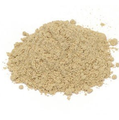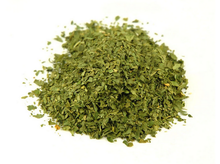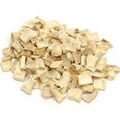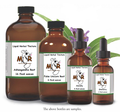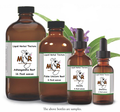 Loading... Please wait...
Loading... Please wait...- Home
- Bulk Herbs
- Herbs (O-P)
- Parsley Leaf
Product Description
Parsley Leaf
Also Known As – Petroselinum crispum
Organically Grown - USA
Overview - Parsley is native to the Mediterranean region of Southern Europe and has been cultivated for more than 2,000 years. It was originally used as a medicinal plant (see below) prior to being consumed as a food. Ancient Greeks held parsley to be sacred, using it to not only adorn victors of athletic contests, but also for decorating the tombs of the deceased. While it is uncertain when and where parsley began to be consumed as a seasoning, historians think it may be sometime during the Middle Ages in Europe. Some historians credit Charlemagne with its popularization as he had it grown on his estates.
Medicinal Uses - A sweet plant that contains a substance in which tumor cells cannot multiply. Good for goiter, obesity, edema, dropsy, swollen glands, epilepsy, bed-wetting, fluid retention, rheumatism, sciatica, lumbago, jaundice, indigestion, asthma, coughs, colds, fever, gas, night blindness, swollen breasts, menstrual disorders, promotes onset of menses, snakebites, bruises, dropsy, eye infections, and worms. For thyroid, lung, stomach, bladder, gall stones, kidney stones, liver, and can be used to treat gravel and stones of the kidney. It also makes a good eyewash. It purifies the breath as well. The oil of parsley rubbed on the scalp is purportedly able to stimulate hair growth.
Other Uses – When growing chives, carrots, corn, chili and sweet peppers, onions, peas, roses and tomatoes plant parsley nearby. Asparagus is believed to be particularly benefited when companion planted with parsley.
Nutrient Content – Calcium, fatty oil, iodine, iron, phosphorus, rich in potassium, and rich in vitamins A and C. Rich in vitamins and minerals. Good source of chlorophyll. (Try it after eating onions or garlic)
Parts Used – Fruits, berries, stems, leaves, and roots.
Precautions - Parsley is not recommended for pregnant women in large amounts, as it may cause uterine contractions, but used after delivery, it is said to tone the uterus. Parsley should also be avoided by those who suffer from kidney infection/inflammatory kidney disease.
Suggested - A tisane of dried herb is made when fresh. Eat raw or steep chopped leaves and stems in hot water. Drink 1 cup daily. Tincture: Use 6-12 drops in juice or water, under the tongue or as desired. May be taken 3 times daily. Shake well. Store in cool dark place. Keep out of reach of children
Disclaimer - The information presented herein by Mountain Maus’ Remedies is intended for educational purposes only. These statements have not been evaluated by the FDA and are not intended to diagnose, cure, treat or prevent disease. Individual results may vary, and before using any supplements, it is always advisable to consult with your own health care provider.
Find Similar Products by Tag
Find Similar Products by Category

Product Reviews
-
Herbs smell so wonderful and I can't wait to use them!

Posted by JOANNA D on 16th May 2015
Everything I received was well packaged and delivered in a timely manner. Shop owner was very accommodating and flexible with shipping. Quick to respond and very nice! Herbs smell so wonderful and I can't wait to use them!







